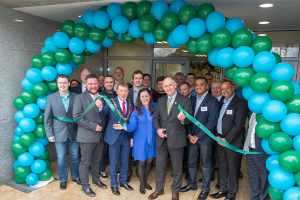Devops – Art? Science? Hype? Can DevOps Deliver on Business Needs
![]() Talking about DevOps can be quite conceptual in many cases. How we integrate the Devops concept into the architecture of a company can quite literally be a blend of arts, discipline and the science of technology. Where that line is drawn is really variable and it depends on a number of factors.
Talking about DevOps can be quite conceptual in many cases. How we integrate the Devops concept into the architecture of a company can quite literally be a blend of arts, discipline and the science of technology. Where that line is drawn is really variable and it depends on a number of factors.
At the intersection of Development and Operations is a genetically embedded business agenda that begins with some issue, followed by a root cause analysis, and the production of an answer or solution. The solutions that have come to meet this have formed into this DevOps movement.
Hard-core statisticians out there may be inclined to point to algorithmic deductions and target those types of gains and advantages that can be identified. With no shortage of statistical information from logging information, performance collections, and the sort, it is quite easy to fixate and become reactive to the analysis of information that is gleaned from these resources. Indeed, sometimes that may actually be the desired focus. Others may rely heavily on features and technical benefits of one technology over others, such as scripting ability and compatibility. Other times it may be a talent analysis of the personnel that drives the focus on a technology. It is very important though to either turn on the filter and extract real value from these technical capabilities or better yet focus on the solutions aspect from the outset.
In a conceptual state, the introduction of DevOps into the enterprise should approach this solution focused balance throughout integration and early during design when possible. Clearly there are cost factors and technical realities in any functional environment, but from the outset, the approach must remain consistent and that is what the underlying balance must maintain.
Infrastructure
Let’s reflect on infrastructure. Modern datacenters feature a range of network, server, and cloud technologies. Whether the cloud environment is internal (private cloud), external (public), or hybrid cloud, the environment calls for tools that feature management, automation, and consistency in the technology that drives it. In many scenarios the problem may consist of a need to boost reliability in infrastructure by making it reproducible and preset. This is common in development environments where leading tools such as Puppet and Chef work to ensure the automated configuration of systems and services in the infrastructure by utilizing their powerful features. Further, the environment may then rely on monitoring and performance metric information that also can implement automated integration strategy.
If an organization starts out in the midst of minutiae of technical elements from the outset, the path can become blurred or delayed, or at least needs to get back on track. A consistent approach to DevOps is one that embraces the underlying business value, being that it addresses the issue and solution, in respect to the technical realities and capabilities of the organization.
In the example above, DevOps may serve as a solution to create the complex and interconnected elements of a sustainable, automated and reliable infrastructure that must be implemented at each stage of design, implementation, and ultimately production.
Looking at scenario after scenario in the wild, the infrastructure, the operations elements are becoming more critical parts of the application. Infrastructure is essentially becoming a code, particularly as many if not all resources are more than likely virtual. The goal, the solution to solve – is visible in many scenarios that hit the news.
Anytime there is a major outage, such as Amazon Web Services, Netflix, and others – in these production instances, uptime, flexibility, and reliability are the keys to customer expectations and successful business for these companies.
If by DevOps from its basic approach one can deliver value to the organization, then DevOps wins and often saves the day. It is always about solving the problem as efficiently as possible. DevOps solutions must meet and deliver on the goals of the business and the ability of that solution to meet the expectations of success. More power to the organization and better value to the customer are being unleashed, be it better development or sustained, reliable operations, or infrastructure for BigData – whatever it is a leading practice on into the future of computing.
A message from John Furrier, co-founder of SiliconANGLE:
Your vote of support is important to us and it helps us keep the content FREE.
One click below supports our mission to provide free, deep, and relevant content.
Join our community on YouTube
Join the community that includes more than 15,000 #CubeAlumni experts, including Amazon.com CEO Andy Jassy, Dell Technologies founder and CEO Michael Dell, Intel CEO Pat Gelsinger, and many more luminaries and experts.
THANK YOU











